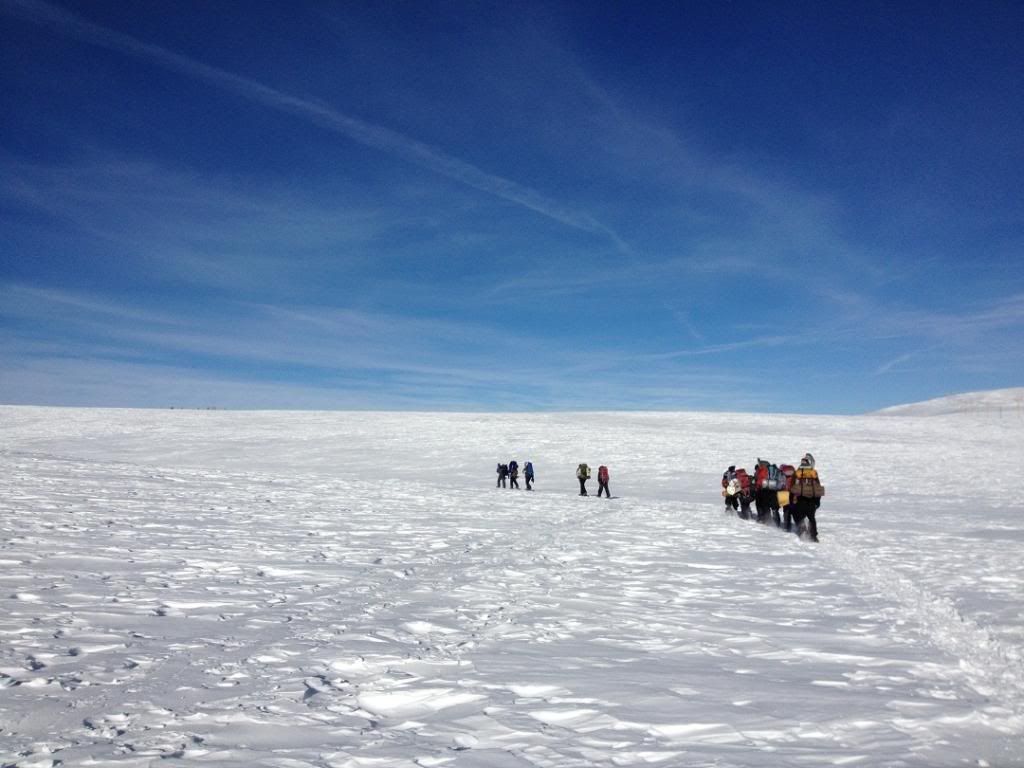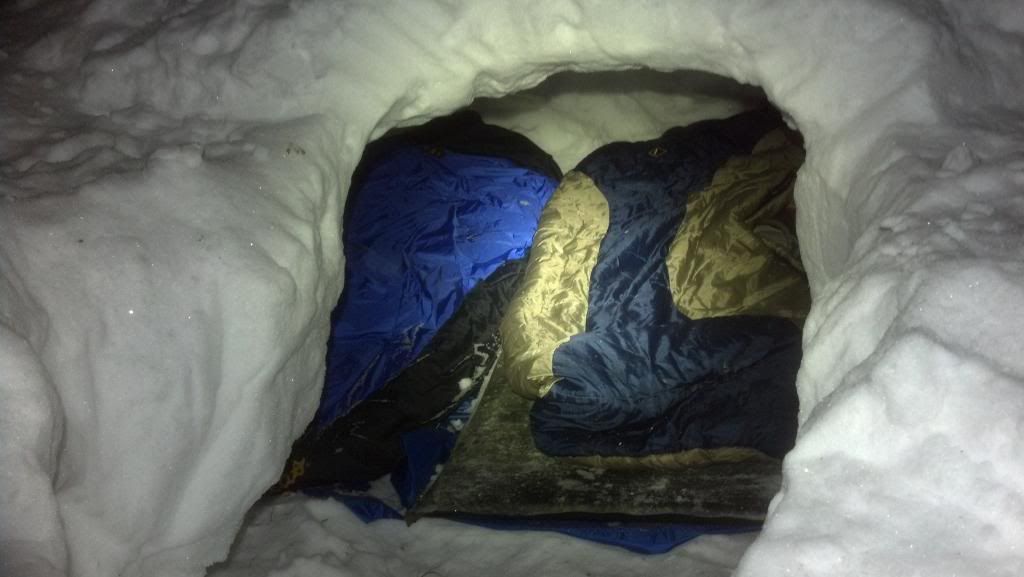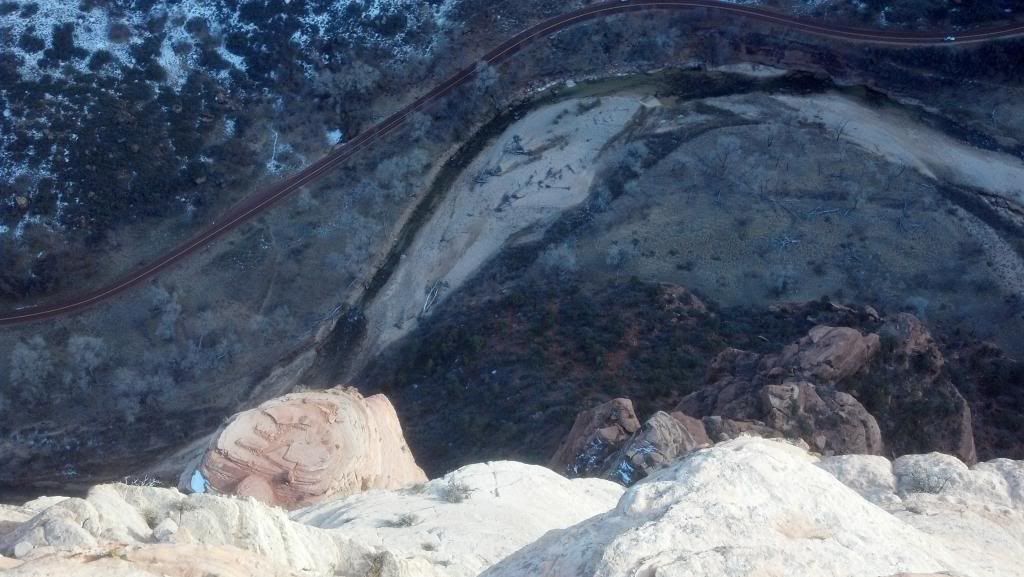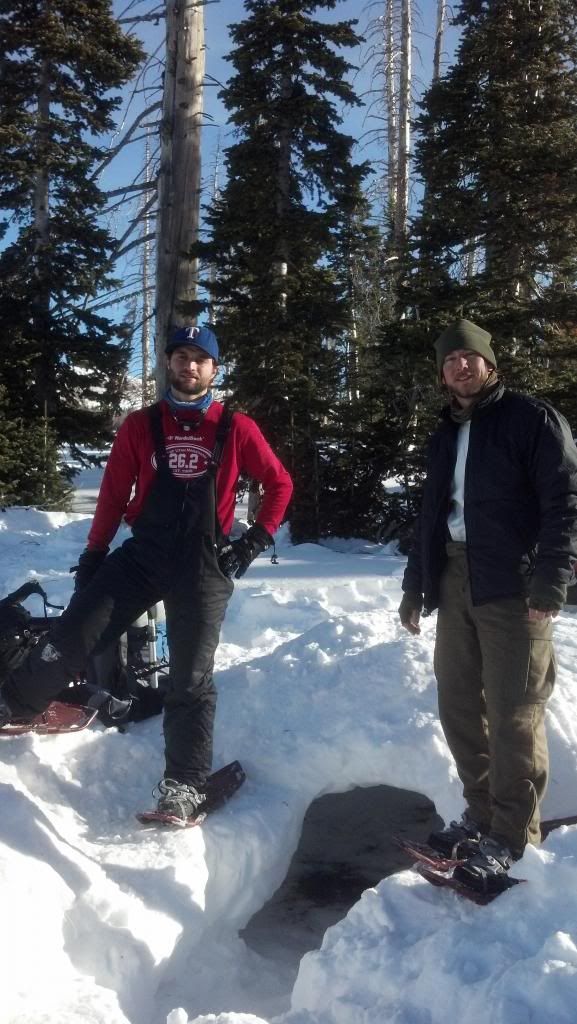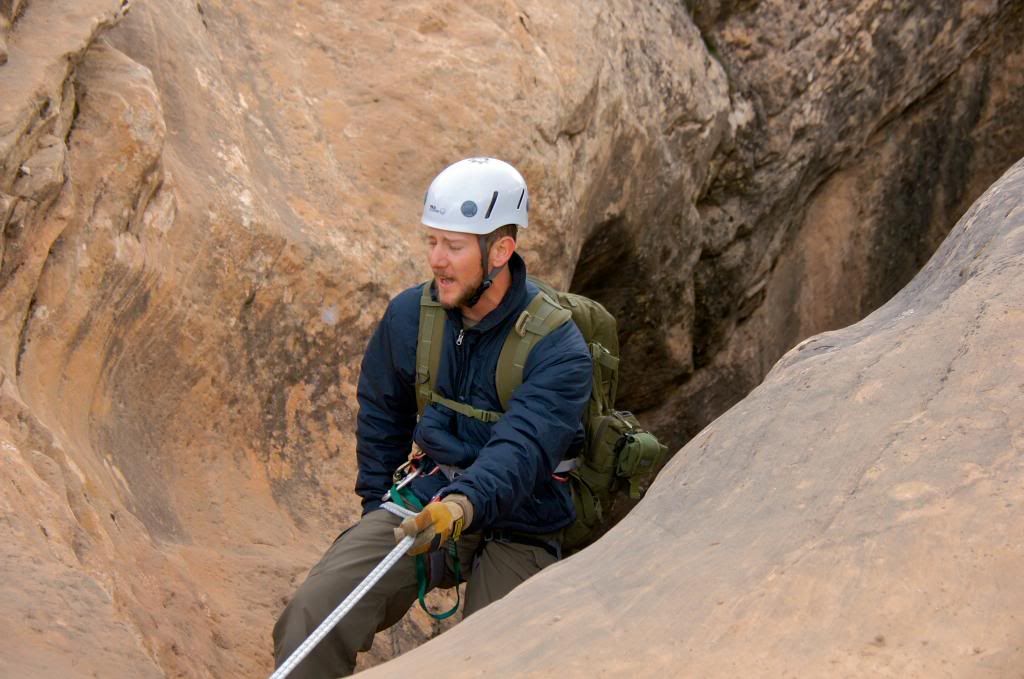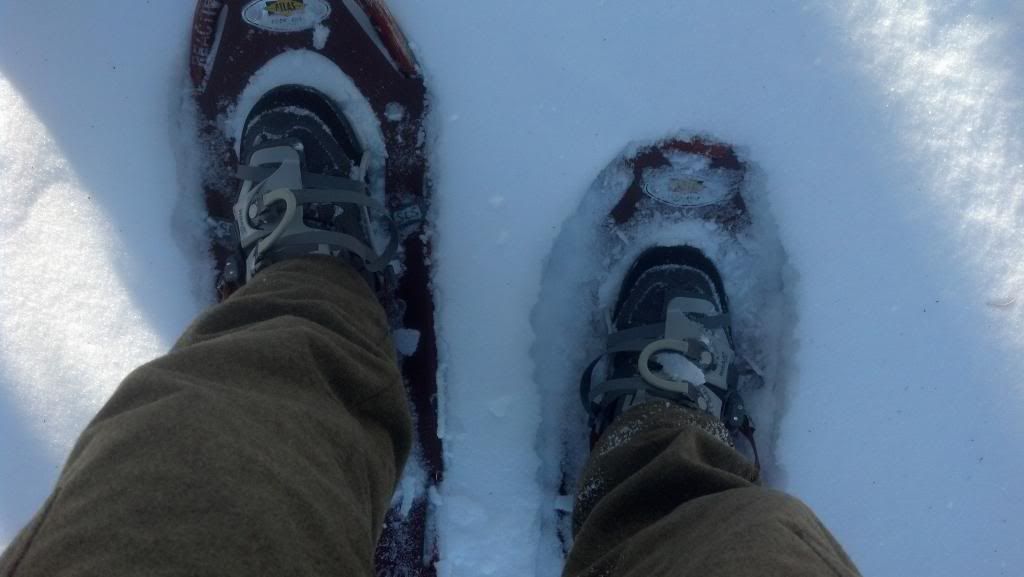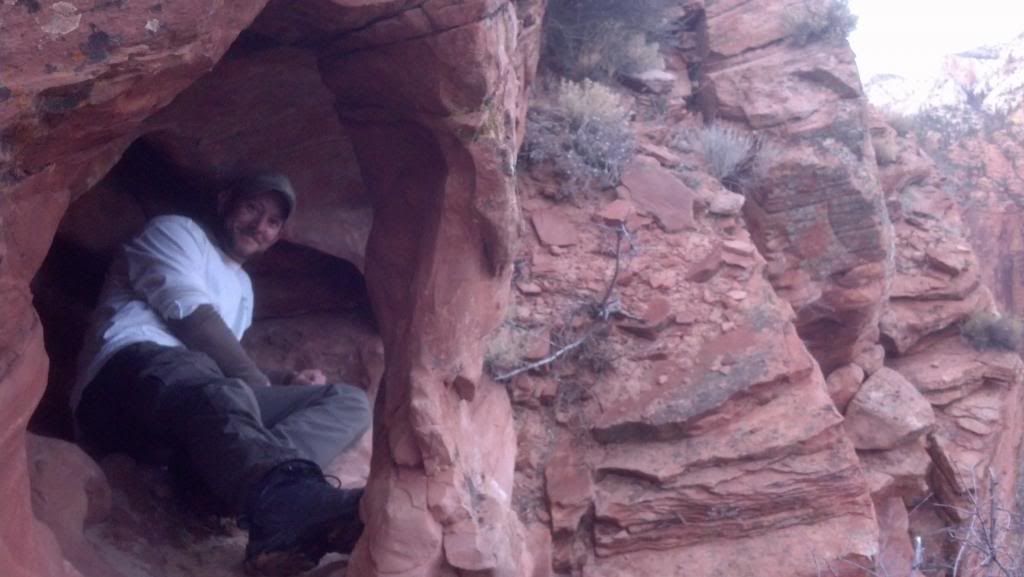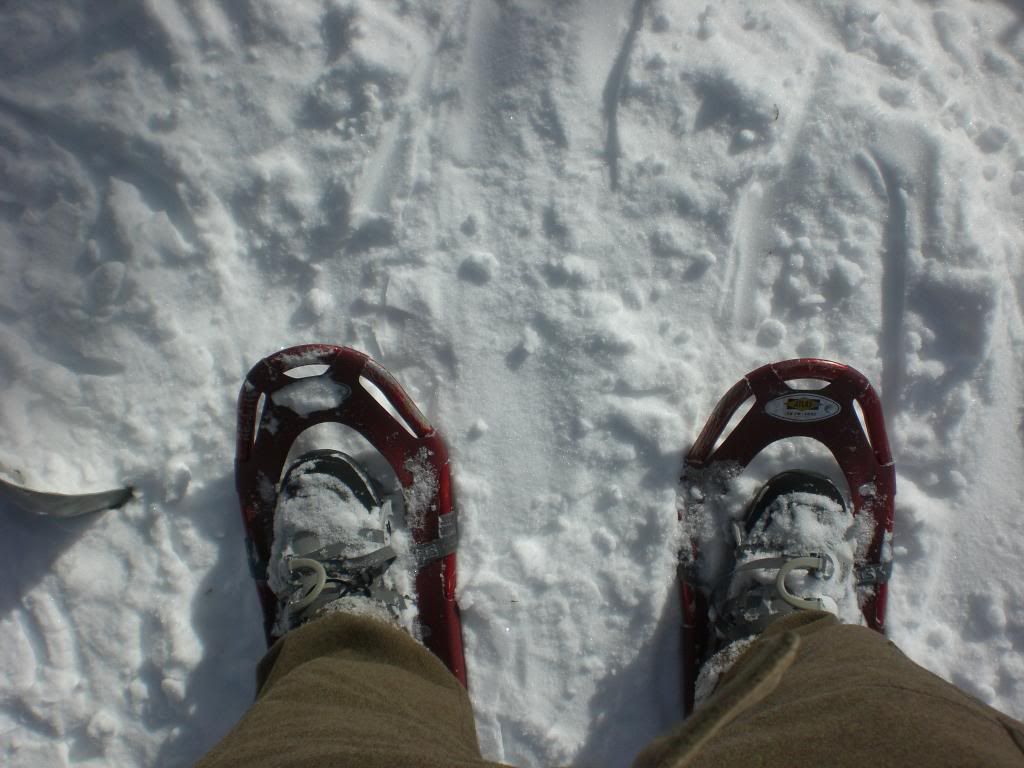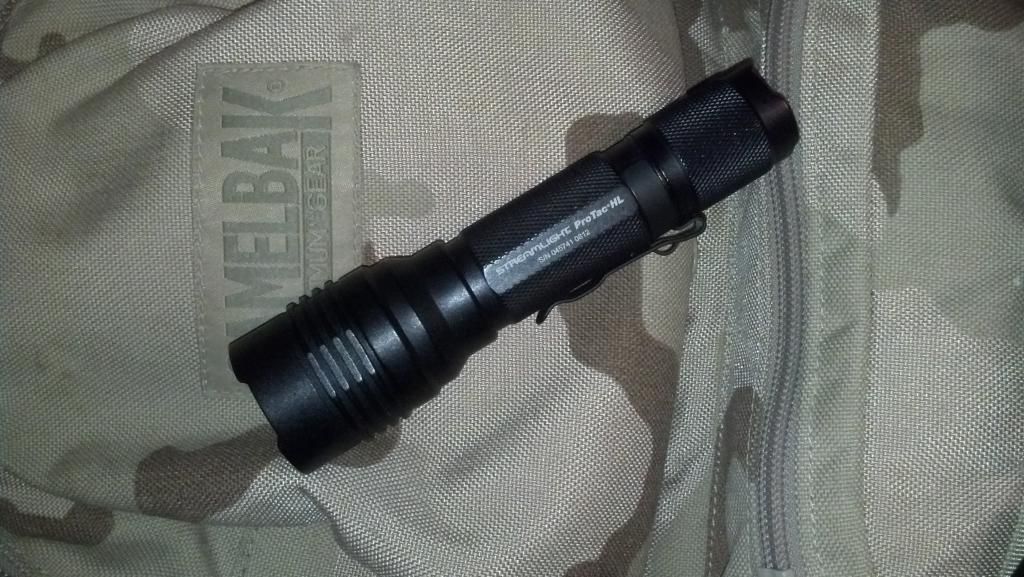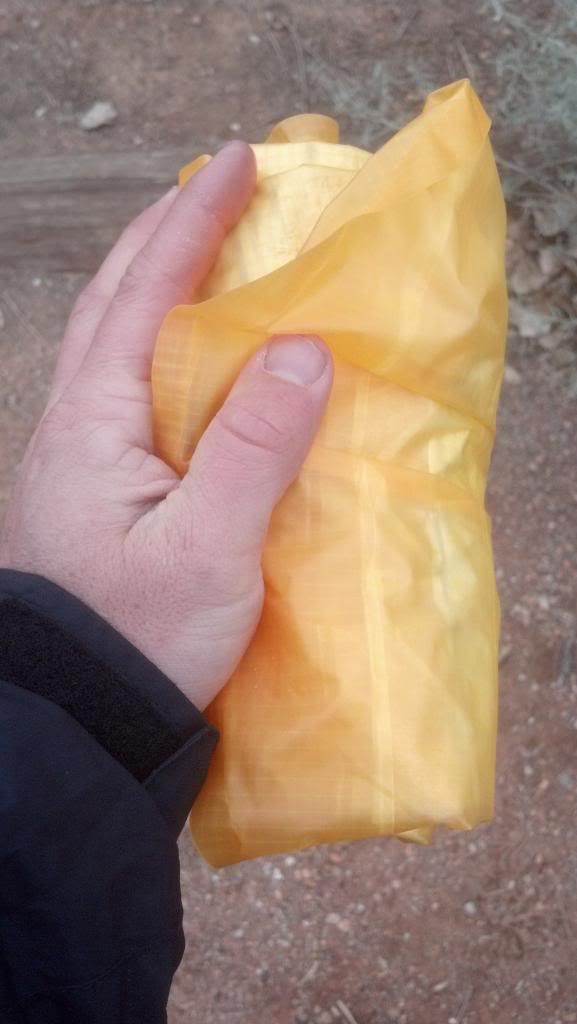Last month, I spent a week backpacking, snowshoeing, rock climbing, and canyoneering through southern Utah. I visited Cedar Breaks above Brian Head, hiked around in the Angel's Landing area in Zion National Park, and camped and climbed in Snow Canyon and Black Rocks just outside of St. George. The weather was pretty nice except for one rainy day, but it was fairly cold the entire week - I think the warmest it got was around 50 on the day we did rock climbing. The first night was below zero at Cedar Breaks, and most other nights were in the 20's, with daytime highs in the 40's.
Snowshoeing in Cedar Breaks out to our camp site.
Snow caves the first night.
A look over the edge at the top of Angel's Landing - long drop, short stop.
100ft rappel during one of the canyoneering trips near St. George.
As with every trip I take, I learned new things as well as tested my existing knowledge, and my regular gear held up wonderfully (my Optimus Crux stove struggled a little during some of the sub-freezing meal times, though). As usual, I had the opportunity to put some new gear to the test, and that's the information that I want to pass along here.
Columbia Whirlibird - More Info Here
I literally lived in this coat for the entire week. Mostly I used the inner "puffy" coat, and I was as snug as a bug the entire time. I would use the outer shell in the mornings and evenings to stay warm when the sun was not around, and also to wrap my feet at night in the bottom of my sleeping bag to help keep them warm while I slept. I love pockets, and this coat has them in spades - just about every available space was turned into a pocket. And while I'm not a big fan of hoods, this hood is actually comfortable, and the few times I had to use it I didn't hate it. This is seriously one of the best coat "systems" that I've ever used, and I look forward to using it for years to come.
The complete system.
Zach (fellow cold enthusiast) and me by our snowcave the morning after our first night there - I'm sporting the inner puffy coat here.
Using the puffy during one of our canyoneering trips (no, I'm not yelling, just communicating with my belayer).
Salomon Elbrus WP - More Info Here
In the past, I haven't been a big fan of Salomon boots, but when I was looking for some good cold weather boots they fit the best. I have generally used the Asolo Fugitives for all of my cold weather trips, but seeing as how this trip was going to include snowshoeing, I wanted to get something that was very well insulated; and besides, my Asolos are beat up beyond serviceable condition. Once I got them into the field, I realized that the Salomon Elbrus is one warm boot! Almost too warm, sometimes, and that's saying a lot when the temps are hovering around zero. They kept my feet warm, dry, and comfortable for the few days I wore them before I switched back to my lightweight hiking boots. Combined with my favorite socks, Darn Tough and Fox River, these boots couldn't have performed better. They also have very aggressive and unique tread, which is something I look for in all of my boots. I have one minor complaint about the size of the lace eyelets, but that's not really an operational concern as much as a personal preference.
Strapped into the Atlas snowshoes that I used.
I wore them when we hiked Angel's Landing, and I was happy about that decision when we hit the ice patches. Here I am with my Salomons in a cave I found over the edge of a cliff at Angel's Landing, "a good place to take a nap."
Atlas Snowshoes - More Info Here
I haven't spent much time in snowshoes in the past, so I don't have much basis for comparison here, but I felt that these shoes worked very well, especially considering that I had a decently weighted pack and at one point ran about 200 feet with pack and all through the snow at a dead run without falling face first into the snow. I liked how they rotated around the foot with each step, and the aggressive crampons on the bottom really helped grab onto some of the harder crusted snow and ice that we encountered. Overall I can't say whether they are better than other shoes, again because of my limited experience with snowshoes, but I can say that I would be happy to use them again. I didn't purchase these, but rather rented them from a local outdoor center, as did everyone else in our group.
The trekking poles and gloves I used have been reviewed in the past, and held up perfectly as always. Trekking poled are invaluable for snowshoeing, in my opinion - I was the only one who had a set and by the end of the snowshoeing part of our expedition I probably could have sold them to one of my fellow hikers for three times their actual cost.
Streamlight ProTac HL - More Info Here
Nearly all of my lights, including my headlamps, are Streamlight, as I'm a big Streamlight fan. The ProTac HL is one of their newer flashlights, and while I didn't get it just for this trip and have owned it for several months, this was the first time it really got to stretch its legs. All I can say is wow! This is one bright light. I could easily see things that were 400m away, and from a light powered by a couple of CR123 batteries, that's impressive. At one point, we were a little confused about where some lava tubes were, and it was a moonless night in the pitch black. We literally found them a couple of hundred yards away thanks to this light. Another time, we were sitting around the campfire when I spotted some movement near the bedrolls so I busted out this light and spotted a little kit fox foraging around the campsite about 20 yards away. The light was so intense when it hit him that you could literally see his confusion and temporary blindness - poor little guy!
My new favorite handheld light for the great outdoors.
Thermarest NeoAir XLite - More Info Here
This is hands-down my favorite new piece of gear. For the last 6 years I have been using a Thermarest Trail Lite, which is their least expensive pad, and it's big and heavy, but it's served me well. When I saw this new pad, though, coming in at 12 ozs and packing nice and small, while still inflating to 2.5 inches with a layer of heat-reflecting foil inside, I knew that this upgrade would be worth every penny. And man was I right - I love this pad! I like to inflate it all the way, then lay down and gently open the valve, letting just the right amount of air out so that my body is properly contoured. Oh what a delight! It fits my sleeping system perfectly and made every night comfortable and restful. Rolling it up is a bit of a pain, as you need to be sure that every last bit of air is out of it, and what is with companies who think that the stuff sack must be the identical size of a fully compressed product?! A stuff sack with an extra inch of material wouldn't be horrible here.
Home away from home.
Rolls up nice and tight.
Complete 12oz package, with my hand for size reference, and it even comes with a repair kit.
I could go on about the adventures we had, especially since I always enjoy my time in the outdoors - but suffice to say that it was a great week and good times were had by all. I'm happy with my choices of new gear, and I hope you were able to glean some useful information from my review. Now get out there and have your own adventures!
Stay Aware, Stay
Safe, Train Hard.

